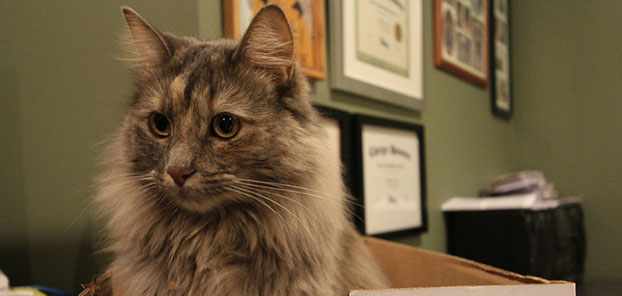Choosing the right kitty litter is a balance between what your cat prefers and what is affordable and easy for you to use.
A major indicator of whether or not you are using the best product is how your cat feels about their litter. Often, cats will avoid their litter boxes and even do their business in inappropriate places if they are not fond of the litter that is in their box. (For more information on inappropriate elimination see: Inappropriate Elimination in Cats)
With kittens, it is advised that a traditional non-clumping cat litter be used. Kittens tend to be curious creatures and may eat the litter. Due to the swelling properties of clumping litter, it is best if the cat litter is non-clumping. For cats that have open or recent wounds, pelleted or paper litter may be advisable because it is less likely to irritate the wound.
From 6 months on, your cat may be moved to a clumping cat litter. Pet owners find clumping litters to be more efficient. They find clumping cat litter much easier to use, as waste can easily be discarded and the contents of the entire box does not need to be changed nearly as often.
When it comes to scented versus non-scented, it is strictly a personal choice. Scented products are often preferred by pet owners because they mask unwanted odors, however the decision really depends on your cat’s preference and whether he or she will use a scented litter.
If allergies are an issue for you or your cat, a dust free product may be necessary. Again your cat’s preference is very important when it comes to choosing which litter to purchase.
If you are having difficulty finding a litter that your cat likes, try filling two boxes with different types of litter and observing which your cat chooses to use. This tactic is also useful when you are trying to switch brands or types of litter. Simply put out two pans, each with a different type of litter and your cat will select the litter that it prefers. Another solution is to gradually introduce your cat to the new type of litter by mixing the old with the new, slowly increasing the amount of new litter until the entire box contains only the new product.
Cats will not hesitate to let you know if they are unhappy with their litter. Most often when you find your cat avoiding the litter box, it is due to the type of litter being used or a dirty litter box that needs to be cleaned. Finding a litter that your pet prefers is the key to correct litter behavior.
Image by davebloggs007



